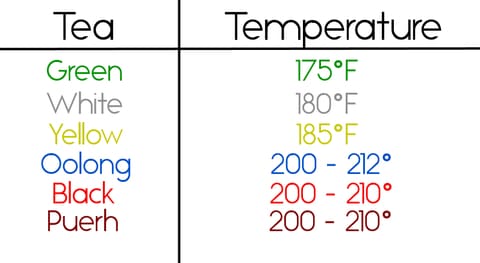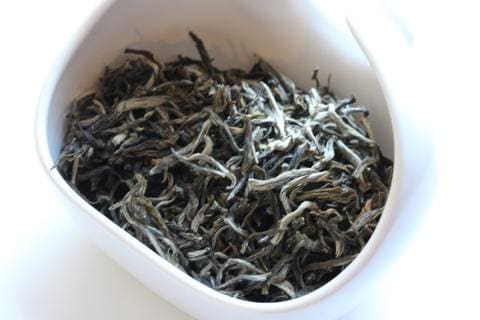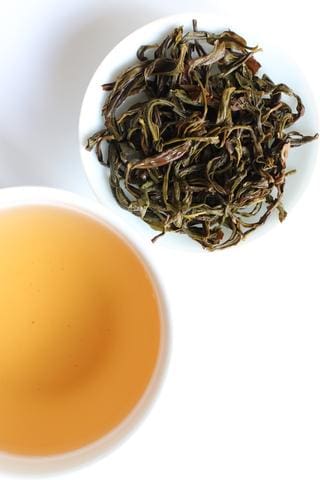
A Beginner’s Guide to Loose Leaf Tea
Loose leaf tea makes for some incredible cups of tea, especially if you know what you are doing. So many people, used to the convenience of bagged tea, let these tea leaves scare them away though. Many find either that first cup of tea turned out all wrong, tasting bitter or flavorless, or else they don’t even bother trying, unsure of what to do and afraid to ask. We’re here to help take that fear away and ensure you make the best cup possible!

First, if you do not already have them, we strongly advise making the following purchases to add to your kitchen:
- Variable Temperature Kettle – Preferably one that can adjust in 1° to 5° It should also ideally have a minimum temperature of 140°F, allowing for maximum flexibility in brewing tea.
- Digital Kitchen Scale – Digital is helpful for getting a precise and easy-to-see measurement. Be sure to find one that measures in 0.1 g increments. This allows for maximum precision.
- Timer – Most digital kitchen scales have a built-in timer, but if you find one that doesn’t, you’ll want to think about purchasing an extra one.
You can certainly make your tea without any of the above. For example, some people like to judge the temperature of water by looking at it or listening to it. Some might time their tea by looking at the color of the infusion. These can definitely be fun exercises, but if you want to get the most out of your tea, the above will really help that happen. And if you’re new to tea, those kitchen tools can alleviate the anxiety of making a cup.
Step One: Calculate The Amount of Tea You Wish to Drink
To prepare your cup of tea, you will want to first think about how much you plan on making for a single sitting. On average, we tend to use mugs that can hold anywhere between 4 oz to 16 oz of tea.
A good guideline to follow is to set aside 1 g of loose leaf for every 2 oz in your mug.
This means that if you are using an 8 oz mug, you will want to plan on using 4 g of loose leaf.
Step Two: Weigh Your Loose Leaf Tea
Next, you will want to set a little dish on your digital scale, taking care to reset the measurement to 0 (this is usually accomplished with a “tare” button).
Once your digital scale reads “0”, measure out your loose leaf tea by slowly scooping it or shaking it on to the scale.
Add or remove any excess tea leaves until it displays the number you calculated in step one.

Step Three: Heat the Water
Water is the most important ingredient in a good cup of tea. You don’t want to have water that is too hot or too cold, and you have to be careful about the water you do select. Distilled water has no minerals for the tea molecules to bond to, which means your cup will taste flat and flavorless. Depending on where you live, tap water can impart metallic or chlorinated flavors.
Natural spring water is ideal, but a good runner-up is filtered tap water that still has some minerals in it.
Each tea is unique in that the optimal flavor might be discovered at different temperatures, and so some playfulness and experimentation is encouraged. There are three important variables that affect the final taste of your tea though, and you will want to keep these in mind:
time ∙ temperature ∙ tea
If you can imagine these three variables on a chart, you would see that they are interrelated. Adjusting one will also affect the other two. The simplest way to explain it is the following:
- The longer you steep your tea, the more the tea’s phytochemicals will saturate the water.
- The more loose leaf tea you use, the more the tea’s phytochemicals will saturate the water.
- The hotter water you use, the faster the tea’s phytochemicals will saturate the water.
This means that if your tea tastes too bitter or too strong, you will want to scale back on one of these variables, trying either lower temperature, less tea, or shorter steeping time. Conversely, if your tea tastes too weak and you’re confident that the water is not the problem, you’ll want to increase one of these variables, trying either hotter temperature, more tea, or longer steeping time.
Although time, temperature, and tea play the most important roles in making a good cup of tea, there is a general guideline you can try as a beginner:
Heat your water to the correct temperature in the chart above. The temperatures given in guidelines assume an infusion time of 60 seconds.

Step Four: Infuse Your Tea
Once your water is ready, place your leaves in either a tea strainer or a teapot, and then carefully and slowly pour the water over your tea leaves. Be sure to set a timer for 60 seconds, and once the time is up, remove the strainer or pour the teapot.
Now that your cup of tea is ready, whatever you do, do not throw away your tea leaves. The reason for this is explained in the next step…
Step Five: Repeat!
When you’re using loose leaf tea, you can resteep your tea! In fact, you can usually resteep your tea three or more times, depending on the tea. Just remember to increase the infusion time slightly. In general, whenever you resteep, allow your tea leaves 10 to 30 additional seconds in the water.
leaf tea with a gentle guide!
Hopefully this guide eases some of the anxiety you might feel before preparing a cup of tea. As always, if you have any questions, we are here for you!
